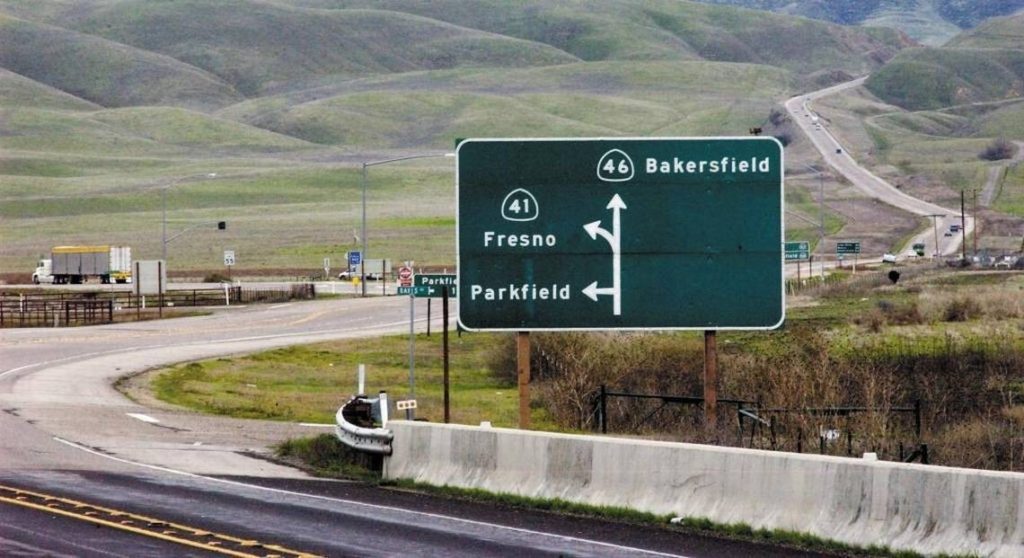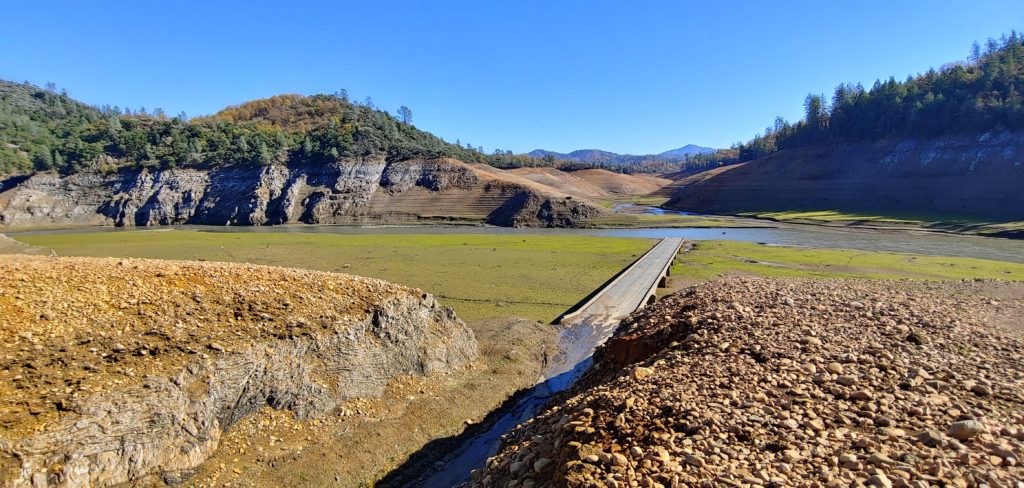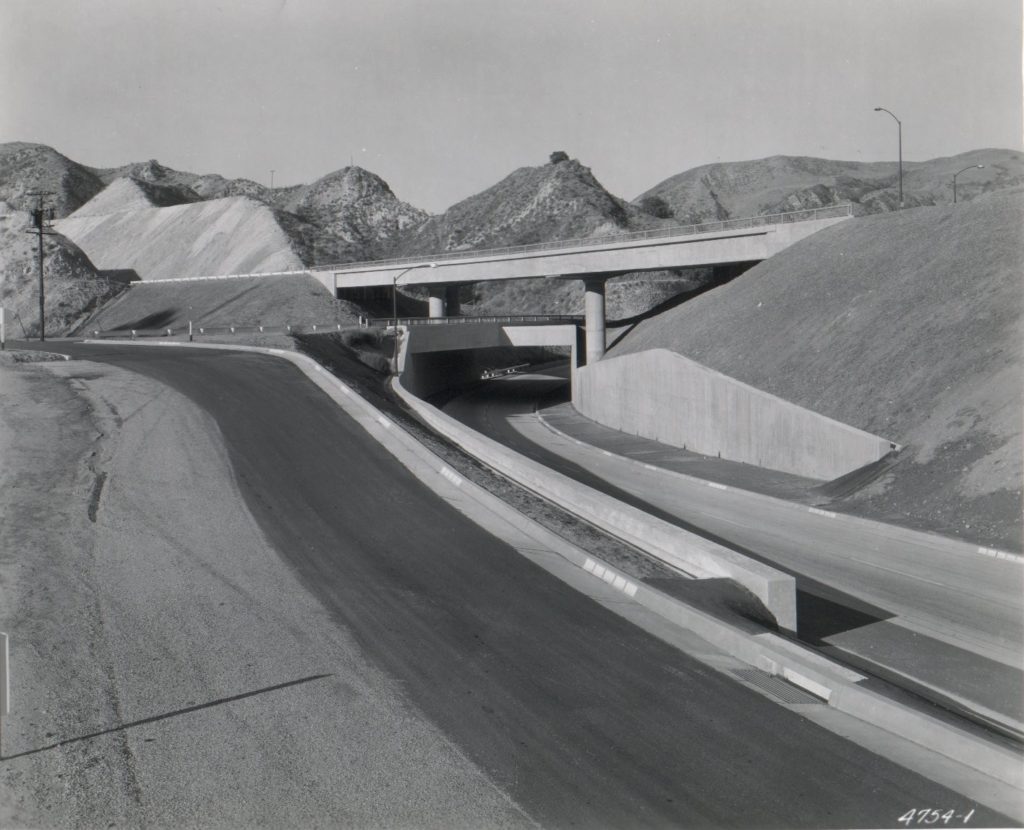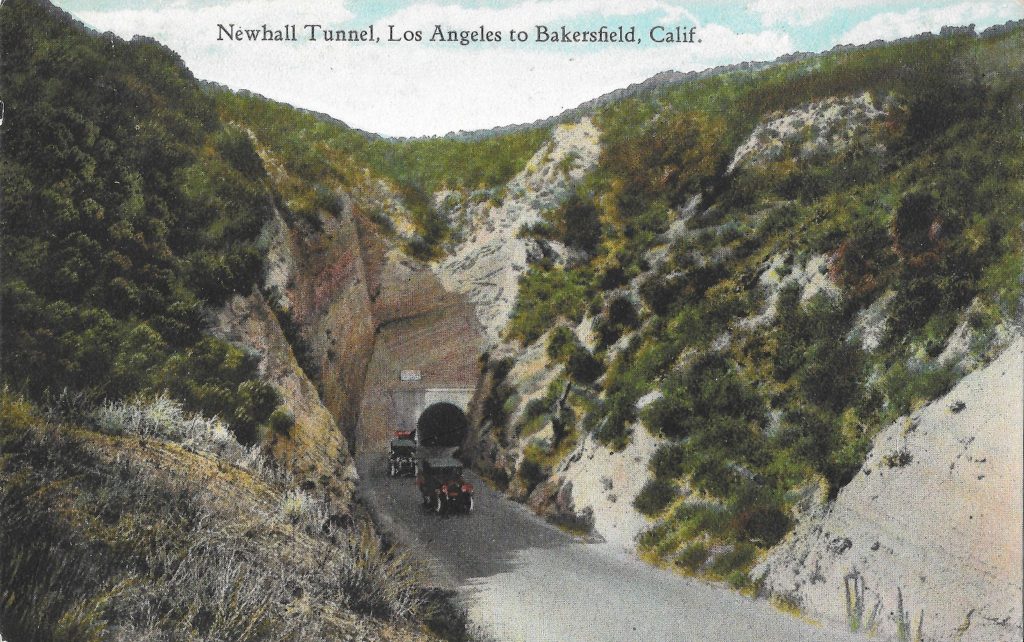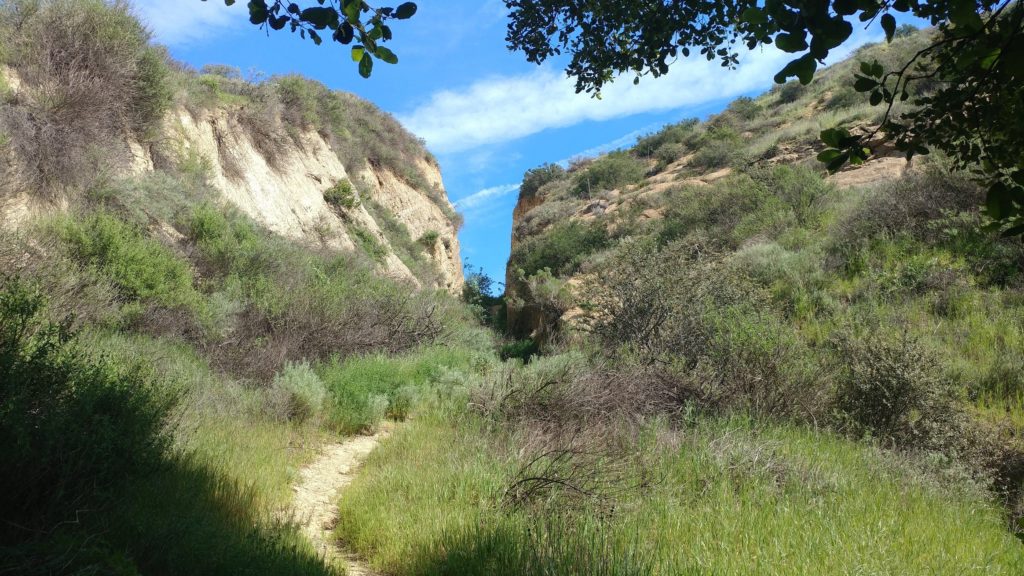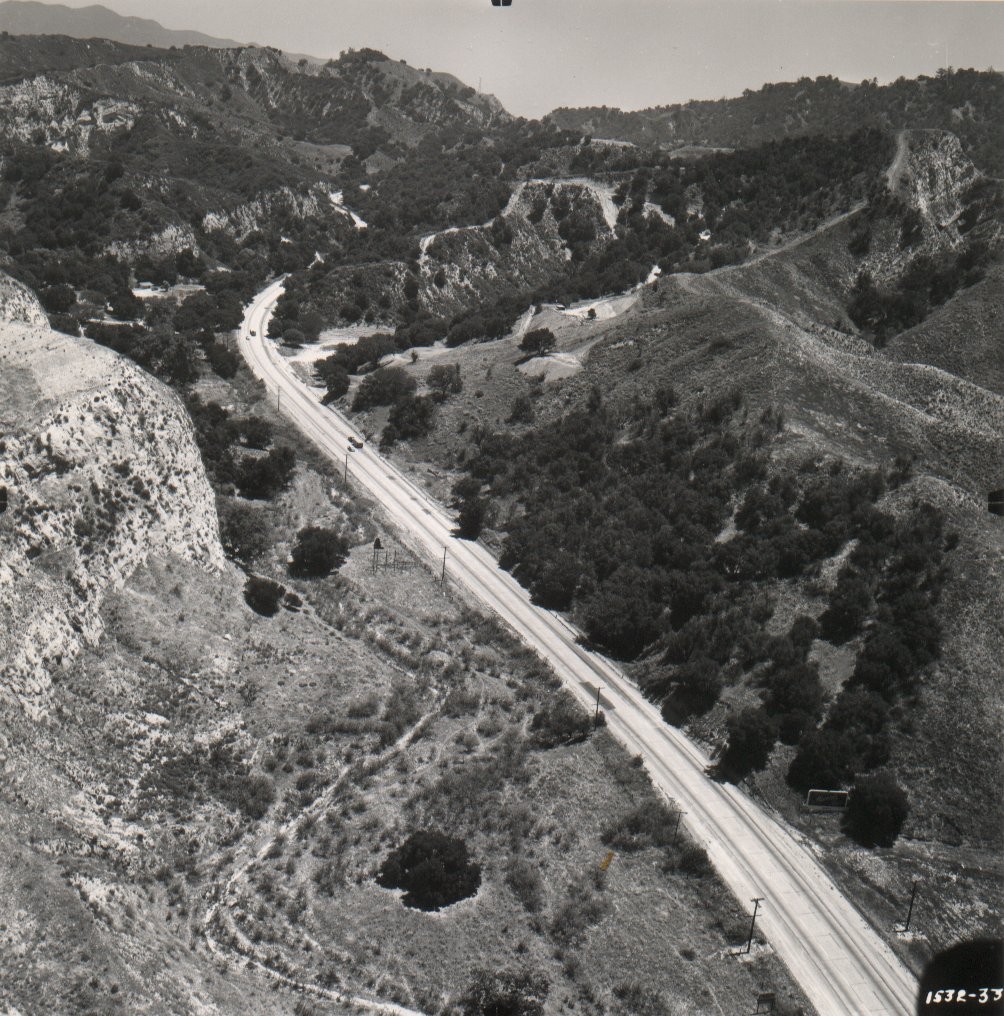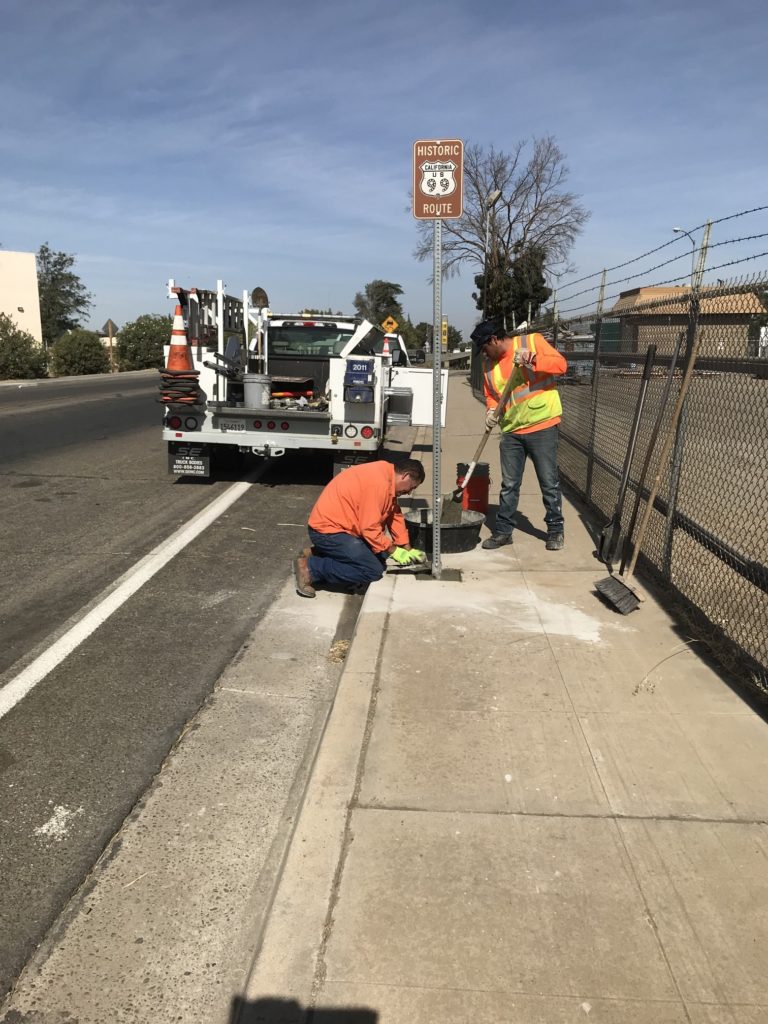For Immediate Release 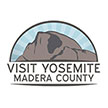 Media Contact: Kate Holden Director of Public Relations 559-683-4636 kate@yosemitethisyear.com Mammoth Orange to Squeeze Back into the Spotlight at the Fossil Discovery Center of Madera County 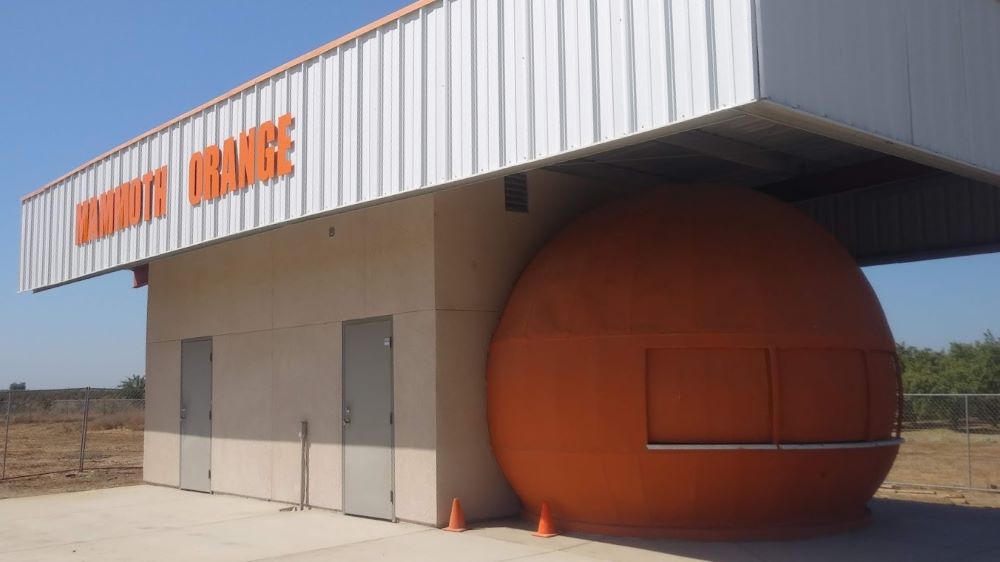 The historic structure was restored to its former glory thanks to the generous donation of time and materials by the Rotary clubs of Chowchilla, Madera and Madera Sunrise. The historic structure was restored to its former glory thanks to the generous donation of time and materials by the Rotary clubs of Chowchilla, Madera and Madera Sunrise. MADERA COUNTY, CA – September 8, 2023 – Many long-time residents of California’s Central Valley will remember The Mammoth Orange as a local landmark. The Mammoth Orange was a refreshment stand located on Highway 99 and was known for its giant hamburgers, excellent fries, and out-of-this-world orange shakes. This historic building is set to make a juicy comeback on Saturday, September 23, 2023, at 6:00 PM, when the Fossil Discovery Center of Madera County invites the public to celebrate a piece of local history with a fundraising dinner and ribbon-cutting ceremony. The original Mammoth Orange closed in 2007 and was abandoned in a storage yard. Later, the 20-foot orange was brought to the Fossil Discovery Center and painstakingly revived. The structure was carefully restored to its former glory as a concession stand and a San Joaquin Valley attraction, thanks to the generous donation of time and materials by the Rotary clubs of Chowchilla, Madera, and Madera Sunrise. “We are thrilled to be reopening the Mammoth Orange at the Fossil Discovery Center,” said Michele Pecina, Director of the Fossil Discovery Center. “This iconic landmark is a believed part of our community, and we are excited to share it with a new generation of visitors. The Mammoth Orange is a great example of how history creates unique and memorable experiences.” The Fossil Discovery Center of Madera County is a museum that houses a collection of fossils, including ancient Columbian Mammoths. It sits adjacent to one of North America’s most extensive middle-Pleistocene fossil excavations, where discoveries continue to this day. The museum offers a variety of educational programs and activities for visitors of all ages. “The Mammoth Orange is a great addition to the Fossil Discovery Center,’ said Pecina. “It will help us attract more visitors to the museum and learn about our region’s rich history.” Tickets for the ribbon-cutting event are $25 for members of the Fossil Discovery Center and $30 for non-members. Tickets include a Smashburger meal served from the Mammoth Orange. The Mammoth Orange ribbon-cutting ceremony is an excellent opportunity to celebrate local and ancient history. Come one, come all to the Fossil Discovery Center of Madera County on Saturday, September 23, 2023, at 6:00 PM. For more information and to purchase tickets, please visit www.maderamammoths.org or call (559) 665-7071. About Visit Yosemite | Madera County Formed in 1985, Visit Yosemite | Madera County’s mission is to draw the millions of Yosemite National Park visitors to its gateway’s many businesses and attractions. We invite visitors to take a journey from the Fossil Discovery Center to the Madera Wine Trail and onward to the High Sierra. Discover incredible dining, talented tradespersons, four seasons of water sports at Bass Lake, the Yosemite Mountain Sugar Pine Railroad and mighty adventures right up to the massive Giant Sequoia trees. Madera County is the gateway to so much more. Yosemite Sierra Visitors Bureau | 40343 Highway 41, Oakhurst, CA 93644 |
Category: Madera County
Association Announcements
Over the Thanksgiving holiday weekend, one of our recently placed signs was stolen in Madera. Our northernmost sign on Gateway Drive, a 24×36 sign, was taken. The City informed me of this shortly after and we worked on a solution. We agreed the sign wasn’t in the safest place and will be relocated to a better location once it is replaced. Future signs will also be marked by the City to reduce problems with theft and potential resale of the signs.
In early November, we went on a trip up to Northern California to see Lake Shasta in person, among many other things. Over the course of the US 99 portion of the trip, we took approximately 1200 photos, the bulk of which were at Lake Shasta. In addition to photos, some videos were also taken covering some of the highlights of the trip. Those videos have been posted to our YouTube channel. We are also planning a presentation covering Lake Shasta in early 2022.
https://www.youtube.com/channel/UCAvGZpwJjMnoBplxbkxMmaw/
We are also in need to a Treasurer for our Association. If you would like to join our board, help us grow as an Association, and can help with fundraising, let’s talk! We are a small group and can use the help.
Our December meeting is tonight at 6pm! Come join us and learn about what is going on with the Association, our future plans, and hear our guest speaker from the Historic Ukiah-Tahoe Highway Association talk about the historic roadway and its link with US 99. Register using the link below.
https://us06web.zoom.us/meeting/register/tZEpf-2gqj0oG9Dz7_t9OREmeuTAf84A5EgX
December 2021 Newsletter
“James Dean’s Last Ride”
by Member #15
Sandy and I live eight miles East of Auburn in Cool, California. We enjoy vacationing every year at Avila Beach. Driving the roads to picturesque Avila Beach is where this story begins.
From Cool we travel South on I-5 and turn off at State Route 41 and cross over onto Route 46 west at the junction; and then onto the 101 south toward Avila Beach. The junction of Routes 41 and 46 are in the middle of nowhere, at the end of a long drive; and even though I had seen the sign marking the “James Dean Memorial Junction” more than once—what I was reading didn’t register with me for two or three years. Finally, I had to ask: “Was this lonely Y Junction, located in a cow pasture among the parched & rolling foothills of San Luis Obispo County, the place where the world-famous actor was killed in a nearly head-on collision?” It didn’t seem possible to me. I began looking closely into this accident and James Dean’s short life. It became an ever-expanding whirlpool of persons / time / places and happenstance. And, oh yes, it’s a tale of some very bad driving.
James Dean’s last picture was “Giant” staring Rock Hudson and Elizabeth Taylor. James Dean had a supporting role in that movie.
Elizabeth Taylor’s number 4 husband was Eddie Fisher. In his autobiography, Eddie, wrote this about Elizabeth after their 1964 divorce: “Ah, Elizabeth Taylor! She is every man’s dream, the most beautiful woman in the world… with the morals of a truck driver!”
About two weeks after Dean competed filming his part in “Giant” he was off to the races.
Dean had a reputation of taking a lot of unnecessary risks when driving hot cars or motorcycles on public roads. More recently he had taken up car racing in the Southern California area. On September 30, 1955, Dean and his Mechanic Rolf Wütherich were on their way to enter Dean’s brand-new “Little Bastard” Porsche in an SCCA Club race being held at the Salinas Airport. There were two options when it came to getting the Spyder to the race track: Dean could’ve used his personal tow vehicle and a trailer he borrowed to haul his car, which was the original plan. Or he could’ve driven his Spyder on the streets, in traffic, over the long drive to the track. He chose the latter, which was not unusual for the competitors in this race to do. However, in his memoir, “Jimmy & Me”, friend and follow race car driver, Lew Bracker, wrote that he would never have let Dean drive that car to the track if he had known about it before hand.
In 1955 there was no Interstate-5, rather, there was HWY 99 running North and South along a somewhat similar alinement. Also, there was no State Route 46 as of yet. The road being used at that time was Route 466.
James Dean and his mechanic Rolf Wütherich drove north from the Sherman Oaks area to join HWY 99. Later, he drove over the four-lane Ridge Route Alternate [HWY 99]. When he made a short stop at Blackwell’s Corner, he bragged to fellow racecar driver, Bruce Kessler, that he had driven his Porsche Spyder 550 at one hundred and twenty mph over a section of HWY 99. Most likely a downhill section in the Wheeler Ridge area.
Rolf Wütherich was a German national who was employed in the Porsche Factory”s racing department. During World War II, he served in the Luftwaffe as a teenaged glider pilot; paratrooper and aircraft mechanic. His time in the Luftwaffe instilled in him the lifetime love of high performance machinery on which he later became an expert. It is rumored that taking on the more mature Wütherich as Dean’s ‘race team’ was part of a deal in getting the owner of Competition Motors, Johnny von Newman, to agree to sell the Spyder to James Dean in the first place. Von Newman definitely didn’t think that Dean had enough racing experience to handle the latest and more powerful model. Dean already owned a Porsche Super-Speedster 356, which was considered more of an entry level racer as compared to the Spyder 550.
The fatal wreck occurred at the junction of State 41 and US 466, near the town of Cholame, California, when a Cal Poly student, who was headed east on 466, made a left-hand turn at Route 41 in front of Dean’s oncoming Spyder, which was heading west on 466. Both drivers were exceeding the posted speed limit, however, I’ve been over both Routes 46 and 41(not to mention over the remains of old 466) and nobody drives at the posted speed limit in that area—including myself—and I don’t think anybody ever has. Just how fast Dean was driving is a subject of considerable controversy to this day. The controversy started with the two original investigating CHP officers who couldn’t agree on which party was to blame or how fast the drivers were traveling. During the wreck, Rolf was thrown clear of the Spyder and survived, but spent a year in the hospital and likely had some very ugly and permanent personality changes that got him into serious trouble.
*************************************************************
As for myself, I’ve hiked over all the remaining sections of old Route 466 in the Polonio grade area of Antelope Road [CA 46] in both directions a number of times. There are three distinct remaining sections—Starting at the Antelope Exit near a place called Poison Water Pond that can be seen on Google Earth, you can walk west unimpeded all the way to the Memorial Junction. Also you can walk east from the same starting point [Antelope Exit] to where old 466 has been buried under the modern Route 46. You’ll have to climb over one barbed wire fence in the small parking area to get onto this section. There is another short section on the North side of 46, which actually is a continuation of old 466 as it comes out from under the 46 roadbed mentioned above. This last section is accessed from 46 westbound and is just across 46 from the Polonio Pass Pumping Section. The entire 466 remains total about seven miles in one direction give-or-take. Old 466 throughout the Polonio Pass area looks more like the 1915 era Ridge Route through the Tehachapi Mountains than it does the modern California, State Route 46.
I’ve heard that some people have driven motorcycles over some or all of historic 466. I think you would need an ATV to drive over all of 466 in a four wheel vehicle. Personally, I wouldn’t take a motor vehicle up there because it damages the exposed road surfaces and increases your chance of being spotted. Keep in mind that all of the remaining sections are on 100% private property. Standing out might get you stopped. Also, I would never take a pet dog with me to 466 because it’s a cattle ranch, and ranchers have the legal right to shoot any dog that they even think is worrying their cattle and / or you might get a visit from the CHP. However, I think the odds of any of that happening to you are pretty low. Plan your visit to the James Dean Memorial Junction area in the spring time to see the beauty of the green hills and flowers in bloom.
There are a number of interesting side trips to take regarding James Dean history in the Junction area. Blackwell’s Corner has been on 46 since before there was a 46 and long before Dean stopped there on his last ride. In fact, it was the last controlled stop he ever made. Blackwell’s has a small James Dean museum in the far corner of the shop, which includes Dean’s driving goggles picked up on 466 immediately after the accident (one rumor has it that these googles were actually being worn by Rolf on that day). Blackwell’s Corner Store is a great place to shop for olives; pickles and many other delicacies. It’s a must stop for Dean Fans. How James Dean got to the Blackwell’s Corner area, and beyond, is also a subject of controversy. He either drove north on HWY 99 toward Famoso, the city lost in time, and then turned directly onto 466 westbound, or he took, the so-called “Racers Road”, which starts at the HWY 99 cutoff onto 33/166 toward Maricopa and the town of Taft et cetera. The oil derricks along the Racer’s Road are reminiscent of scenes out of the movie “Giant”. Both these routes go by Blackwell’s Corner. I’ve driven over these two routes in both directions a number of times as well. Frankly most of this countryside is ‘lost in time’. Many places look as if they haven’t changed since 1955. I like driving through this general area—it’s an instant ‘History Rush’, for me.
I would like to give a shout out to some of the people I’ve asked questions of over several years regarding James Dean and his final ride.
Shannon Wafford, who fact-checked this article and made helpful suggestions, has hosted the annual James Dean Memorial run for the last six years; and has learned a great deal of insider’s information & made many invaluable contacts along the way. This run starts in Hollywood and ends in Salinas (you can pick it up on any part of the route with previous arrangement with Shan). Shan is a film maker and custom car builder with some 30 years of experience. He knows how cars perform on the race track. http://www.facebook.com/jamesdeanslastdrive
http://www.corvettesandcustoms.com
Michael Ballard who encouraged me to write this article. He has an encyclopedic knowledge of all the SoCal highways and byways; and their histories. He must have an amazing photographic memory:
Harrison Irving Scott who was very personally moved when he first heard that James Dean had been killed when it occurred back in 1955. Scottie is the very embodiment of the Ridge Route’s history today. He has written two books regarding the Ridge Route and a number of articles and has given many interviews. He was the subject of Huell Howser’s “Road Trip America” the “Ridge Route-2003 Season 1 Episode 22”: http://www.ridgeroute.com/
Lee Raskin took the time to answer my many questions regarding James Dean early on. He is the author of excellent books on this and related subjects, including “James Dean on the Road to Salinas” 2015 :
https://www.stanceandspeed.com/lee-raskin/
I’ll attempt to answer questions you may have… as others have answered my questions:
manxcat2@sbcglobal.net
December Presentation
Join us on December 7th, 2021 for a presentation on the Historic Ukiah-Tahoe Highway Association by Mike Herman. He will discuss the Historic Ukiah-Tahoe Highway Association and a Travel Guide that he wrote about Historic US 99W in California, “The Forgotten Highway”. At this meeting, we will cover some of the ups and downs of trying to get the Association started. We will also discuss how this turned into writing several Travel Guides including the one about US 99W. We hope that you can attend the Zoom Meeting on Dec. 7th at 6pm.
https://us06web.zoom.us/meeting/register/tZEpf-2gqj0oG9Dz7_t9OREmeuTAf84A5EgX
Highway 99 Discussion Forums
We restarted our online discussion forums for Historic Highway 99. Come join in! Tell your Highway 99 stories, discuss your favorite place along the road, learn about the history, and more!
https://historic99.org/forums/
Upcoming Projects
Things are looking up! We have a few projects in the works at various levels now. In Madera County, we are working on posting signs to mark the Pine and the Palm along Highway 99. At this time, we are in the design phase for the signs. We are also looking into getting it designated a “Historic Landmark”, which is something we will need help with. We intend to work with local historical societies, Madera County, and Caltrans to get this done.
We will also be working with Caltrans District 2 to have Historic Route signs posted along State Highway 263 between Yreka and Hornbrook along the Historic Shasta River Canyon alignment. After surveying the route, we have determined that six signs should be posted. These signs would be posted at the 3/263 junction, 1931 Pioneer Bridge, and at the 96/263 junction.
If you have an idea for a project for the 99 Association or would like to get involved, let us know!
Board Position Open
We are currently seeking a Treasurer for our organization to manage our finances and be a part of the decision-making process. If you are interested, or know someone that might be, contact us. We’d love to have you as a part of our team and help keep Historic US 99 alive in California!
Membership and Donations
As we slowly ramp up our efforts to get Historic Route signage placed in various cities and historic locations such as the Pine and Palm, we need your support. You can do this by becoming a member, donating money, or by volunteering with our Association. We are a 501(c)3 non-profit corporation and your donations may be tax deductible. Why not help reduce your tax burden for 2022 by donating prior to the new year? We can also use your help with some of our projects, website, and our newsletter. Having someone local to act as our ambassador or liaison would be of great help.
We do wish to thank all those that have donated and become members thus far. Our most recent project in Madera couldn’t have happened without your support!
Featured Photo
Lake Shasta got down to its second lowest level since 1944 when it started filling. On October 21, 2021, the lake reached 882.24′, which is 184.76′ below full pool. By the time I visited on November 9, 2021, the lake had only risen to 889′, still leaving the bulk of US 99 still exposed. Our featured photo shows what that level means. Here, Salt Creek joins the Sacramento River at the former townsite of Pollock. The river has shifted to flow through the townsite itself, with the former river-crossing span left dry. Soot from passing steam locomotives along the former Southern Pacific Railroad can also be seen on the bridge. It is amazing how much is intact despite this bridge only being above water for a few short periods since 1944. As of this writing, the level is still only at 895′.
Errata
Starting January 2022, our meetings with be bi-monthly, as will our newsletters. More information will be posted on our Meetings and Newsletter pages soon.
November 2021 Newsletter
Message from the President
On November 23, 2021, we celebrate our first year as a California Non-Profit Public Benefit Corporation! We have done a lot in our first year and have a lot more to do in the future. In March 2021, we posted our first signs in the city of Calexico and were granted our 501(c)3 status. We also started memberships at the time. Our memberships are growing and now cover California, Oregon, Washington, and British Columbia. In September 2021, we worked with the city of Madera to post new signs along their portion of Historic US 99 known as Gateway Drive. We’ve been in two newspapers so far because of these projects.
I am very proud of what we have been able to accomplish in such a short period of time. We could not have done any of this without all your support and wish to thank all that have contributed their time and money toward our efforts. We also would love to hear from you! What are your thoughts about what we’ve done? Would you like to help? We need your help to represent us throughout the state. We’d love to hear your feedback.
US 99 and Newhall Pass – Part 2
by Michael F Ballard
Upgrading to a Four Lane Expressway
By the early 1940’s, it became evident that yet another improvement had to be made to the highway. World War II postponed most of the planned improvements for US 99. A plan to widen US 99 to four lanes along its entire course was begun in 1947. On June 24, 1948, a contract was awarded for a 3.3-mile segment, Saugus Junction to Pico Canyon. It was completed on April 8, 1949. In this case, the widening was cheaper, costing only $450,000, as only minor realignments had to be done. The old lanes were used for the northbound side and a new set of lanes was added for the southbound side. The Weldon and Gavin Canyon sections were finally widened to a four-lane expressway in 1951. The old concrete could not be used and had to be demolished, as this section required considerable straightening. The new lanes were made of eight-inch concrete 24 feet wide with a division strip of varying width. These two new roadways had asphalt shoulders that were eight feet wide on the right and five feet wide on the left. The realigning of the roadway involved the excavation of over 700,000 cubic yards. Total cost for this section amounted to about $1 million.
By 1953, traffic had increased to the point where the next step had to be taken – grade separations. The first section of freeway was completed in 1954. It ran from San Fernando Road near Sepulveda Boulevard (Sepulveda Junction) to the base of Weldon Canyon. This new freeway had many features which greatly improved traffic flow through here. A three-level interchange was constructed at the junction of US 6 and US 99. Direct ramps were constructed to connect northbound US 99 traffic to northbound US 6 and southbound US 6 traffic to southbound US 99.
Upgrading to an Interstate
The first segment of US 99 in the Santa Clarita Valley to be reconstructed as an Interstate was between Saugus Junction and Castaic Junction. That freeway, completed in 1964, still carried US 99 shields on the overhead signs. This was done to ease the transition to I-5 from US 99. The completion of the freeway eliminated two major traffic signals along the old highway. From 1967 to 1968, the rest of old US 99 was upgraded to a full freeway. The original freeway through Newhall Pass is now used as the truck route and has been since the interchange was reconstructed with State Highway 14, the Antelope Valley Freeway. The new interchange is located just a half mile northwest of the old interchange.
Earthquakes and Newhall Pass
On the morning of February 9, 1971, it was still under construction when the Sylmar / San Fernando earthquake struck. Most of what was built collapsed, killing two people in a pickup truck below. It also crushed a newly constructed crane, which was set to be used for the first time that Tuesday morning. The interchange was subsequently rebuilt and finally completed in 1975. However, on January 17, 1994, two of the bridges collapsed in the Reseda / Northridge earthquake. It took less that a year for the interchange to be rebuilt which is remarkable for reconstruction of a major, and functioning, freeway interchange. The old expressway in Gavin Canyon was used as a temporary freeway after the Gavin Canyon overpasses partially collapsed leaving one big rig and a few cars stranded on an island in the sky. The original 1951 concrete was paved over at that time. The center concrete barrier and metal guardrail were also added at that time.
Highway 99 In the News
We were in the news on Saturday, October 9, 2021! The Madera Tribune, a local paper covering Madera County, printed the press release that was issued by the City of Madera for our latest signing project. Getting ink, no matter how, is pretty cool. Every little bit helps with awareness of our organization and spreading the word of our goals.
http://www.maderatribune.com/single-post/historic-99-signs-posted-in-madera
November Presentation
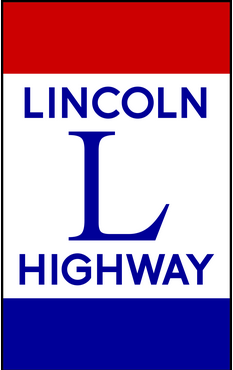
“Where the Lincoln Highway meets Highway 99.”
A look at where the Lincoln Highway, America’s first Transcontinental Highway, 1913-1927, meets Highway 99 in California Central Valley. We will discuss why the Lincoln Highway chose the central valley route to Altamont Pass instead of a more direct one. Hint, there wasn’t any. When the Lincoln Highway ceased to exist, the number system Highway 99 took over from Sacramento south. We will look at some places where you can still see some of the histories of these two famous roads.
Along with his wife Monica, Trey created “Adventures in California History,” an ongoing exploration of historic California. Trey is currently the Vice-President of the Lincoln Highway Association.
Join us on November 2, 2021 at 6 pm for a Zoom presentation. To register, please use the link below:
https://us06web.zoom.us/meeting/register/tZcqf-2rrDksH9Yjqv4pqIALpt1W3TAQqJ9V
Membership and Donations
We are looking to expand our organization. With the number of cities interested in Historic Route signage growing, we need your support! Donations big and small are also welcome. Any donation above $20 will include an optional one-year membership. We are also working on a potential “Lifetime” membership, which will be above a specific donation amount.
Signing up is easy! Join us as a member and help us grow!
Highway 99 Discussion Forums
We restarted our online discussion forums for Historic Highway 99. Come join in! Tell your Highway 99 stories, discuss your favorite place along the road, learn about the history, and more!
https://historic99.org/forums/
Upcoming Projects
Things are looking up! We have a few projects in the works at various levels now. In Madera County, we are working on posting signs to mark the Pine and the Palm along Highway 99. We are also looking into getting it designated a “Historic Landmark”, which is something we will need help with. We intend to work with local historical societies, Madera County, and Caltrans to get this done. If you have an idea for a project for the 99 Association or would like to get involved, let us know!
Board Position Open
We are currently seeking a Treasurer for our organization. If you are interested, or know someone that might be, contact us. We’d love to have you as a part of our team and help keep Historic US 99 alive in California!
Featured Book
On Creating Our Highway 99 Books
By Jill Livingston
The occasional sighting of the abandoned Dog Creek Bridge off to the side of I-5 in the Sacramento River Canyon never failed to thrill, and frequent drives through the rocky, bridge-bejeweled Shasta River Canyon on old 99 finally prompted an “aha moment.” My sister and I looked at each other and said, “Someone should do a book about this! Shall we? Can we? How?” And the fact that these northern artifacts are connected to that long, hot highway through the Central Valley we often traversed as kids, and later traveled 99 north on a trip to the 1962 World’s Fair in Seattle made this two-lane highway all the more intriguing.
But this was 1994. Back in those ancient days the internet was barely emerging, so doing research was not an easy thing. Nor was “self-publishing.” Our research started simply with driving around and looking for segments of old highway. I have to think that when we found something, it was much more satisfying than the way it goes nowadays; finding out on Facebook that a segment of old road is in such and such a location, go see it. Our trips were truly trips of discovery! I’ll never forget how excited we were when we stumbled upon the old Salt Creek Bridge that had appeared with a lowering Shasta Lake (yes, there were dry years back then too.) And along the way in our travels we visited any local history museums we could as well as the CalTrans Library in Sacramento and Bancroft Library in Berkeley. I even found a few gems in our small local library, such as the Depression era WPA California guidebook with its colorful descriptions of towns along the way.
After considerable trial and error, we came up with a good format for our books: background history in the chapters, a pictorial Tour (using both contemporary and historic photos), a road log and maps in the back. I’m proud that one reviewer called the Ribbon of Highway series the “seminal” Highway 99 books. Several other books have come out since our first publication as this hobby (obsession?) has grown in popularity, and every one contributes to the story. Over time we published new improved editions and covered the entire highway from Canada to Mexico in three books.
It’s sad that so much roadside archeology has disappeared in the last decades, such as neon signs, vintage auto courts, historic bridges replaced, etc. But it’s fun to see how many people have enthusiastically taken to exploring the old roads.
To purchase a copy of “That Ribbon of Highway” and other books by Jill Livingston, please check out their website:
https://www.livinggoldpress.com/index.html
Featured Photo
On October 29, 1933, four years to the day following the great stock market crash of 1929, the Ridge Route Alternate officially opened to traffic. This new road bypassed the treacherous 1915 Ridge Route by many miles, relegating it to a forgotten side-road. This also marked the opening of the largest realignment of US 99 in California. No other section was relocated as far from the original alignment. Today, the view shown in the postcard above is still possible, with one major change. Pyramid Rock and Cut remain, but a large dam is now directly behind it.
October 2021 Newsletter
US 99 and Newhall Pass – Part 1
by Michael F Ballard
The first paths through Newhall Pass were Native American foot trails. They went from Los Angeles to the Mojave Desert and the San Joaquin Valley. These trails were used for trade between the desert and the Los Angeles Basin. As Los Angeles grew in size from a sleepy Mexican pueblo to a major city, Newhall Pass became increasingly important to trade and travel. In 1852, the first improvements to Newhall Pass were implemented. Henry C. Wiley created a windlass system to carry stages and wagons over the bluffs. The windlass system used ropes and pulleys that sometimes broke, dropping whatever was being held up, down to the ground. This system lasted for only two years until General Phineas Banning excavated a thirty-foot deep cut into the bluff. On December 5, 1854, he drove the first stage through the cut. This helped greatly to improve the pass. On October 21, 1858, Banning drove the first stage of the Butterfield-Overland Stage Route through the pass.
Beale and his Cut
In 1863, nine years after General Phineas Banning excavated through the bluff, General Edward F. Beale deepened the cut to ninety feet. This was the biggest improvement to the pass since Wiley’s windlass. However, when Beale deepened the cut, he also added a toll. The tolls were $2.50 for a 12-horse team, 25 cents for a horse and rider, 10 cents for miscellaneous arrivals, and 4 cents each for sheep.
Beale’s Cut, as it came to be known, lasted as the main road for many years. In the early 1870’s, the first asphalt paving was added to the road to help keep the dust down. The last improvement made to the cut was in 1909 when it was deepened an additional ten feet to make it more passable by automobiles. In 1910, the County of Los Angeles constructed a tunnel to bypass the steep grade and cut. The tunnel, which measured only 17 ½ feet wide by 17 feet high and was 435 feet long, did relieve traffic temporarily. Not only did it make travel easier through the pass but it also eliminated the 29% grade that led up to Beale’s Cut. This was also one of the first contracts let for the building of the Ridge Route. Initially, the pavement was only 15 feet wide along here. Eventually in the late 1920’s, it was widened to twenty feet.
Once again, Newhall Pass became a bottleneck. The tunnel was so narrow that if two trucks traveling in opposite directions met at the tunnel, only one could pass through at a time. A traffic count taken on Sunday, January 15, 1928 showed that a total of 9,730 cars came through this tunnel. Weekdays averaged only 3,500 cars daily. Traffic could back up for two miles on each side of the tunnel if an accident occurred. On one of the worst days on record, 20,000 cars passed through the tunnel in just nine hours.
Construction of the Newhall Alternate
In the late 1920’s, the need for a bypass or a complete elimination of the tunnel had become very evident. The fact that the highway became US 99 in 1926 just added extra impetus for a bypass. Construction began on a bypass through Weldon Canyon late in 1928. Weldon Canyon was named after Victor Weldon, a local rancher. It was the first road to be built through there. The new alignment started at the Tunnel Station Viaduct, which was originally built by the City of Los Angeles in 1911 and widened in 1935, thence up Weldon Canyon and Gavin Canyons back to the old alignment near the Santa Clara River. The new route only saved 1.2 miles but it gave travelers another way to go north thus relieving traffic over Newhall Pass. The new roadway, called the Newhall Alternate, was 8.6 miles long, forty feet wide, and paved with three lanes of concrete. Each lane was ten feet wide, the standard at the time. It eliminated Newhall, Saugus, and the Newhall Tunnel from the Ridge Route. It was finally opened to traffic on May 28, 1930.
Part 2 coming next month.
Madera Historic Route 99 Signs

We have some great news! After speaking with officials with the City of Madera, they have agreed to post our Historic Route signs along Gateway Drive. This is the first new signage we will be placing, as Calexico was replacing existing signage. Getting approval in Madera is a significant accomplishment for us and I look forward to many more in the future.
The new signs were posted on September 29, 2021. They were placed along Gateway Drive at Olive Ave, Yosemite Ave, Central Ave, and near Ave 16. We will make an announcement when we have more details regarding any newspaper articles that may come out. This is such a huge success for the Association and the City of Madera! The signs were designed by Jake Bear.
I would like to thank all of our members and donors, the City of Madera and their Public Works Department for helping make this happen. We couldn’t have done this without all your support!
Coming up next, maybe Ontario?
October Presentation
A car passed by the St. Francis Dam on the way to Powerhouse 1 on March 12, 1928. The driver saw a torch light at the base of the dam, and figured the dam keeper, Tony Harnischfeger was down at the base of the dam. A little while later, a motorcycle passed by the St. Francis dam just before midnight. The driver, Ace Hopewell, glanced over to the dam as he passed. All was calm. One can imagine how beautiful it was in the moonlight, giving off a white glow. He continued on his way to Powerhouse 1, where his shift began at midnight. A few minutes later, he heard a terrible crash. He stopped his motorcycle, smoked a cigarette and listened to the loud crashing sound. The area was known for landslides in the area….the Pelona Schist was unstable and often collapsed on to the road. He listened until the sound began to subside, and carefully, he continued on to work, looking for fallen rock. It wasn’t until he arrived at Powerhouse 1, that he was told that the St. Francis Dam had gone out. He was the last living person to see the dam intact.
Join us on Tuesday, October 5 at 6:30 pm, for the story of the St. Francis Dam, the 2nd largest tragedy in California as far as loss of life.
Presented by the St Francis Dam National Memorial Foundation.
https://us06web.zoom.us/meeting/register/tZEldOCtrzwvGdwOa469Nmrkp4ppYiNmI-CV
Featured Photo
The collapse of the St Francis Dam just before midnight on March 12, 1928 caused a great deal of devastation all the way to the Pacific Ocean. Some areas were more permanently affected than others. San Francisquito Creek was shifted east, joining the Santa Clara River near present-day McBean Parkway instead of closer to Castaic Junction. Prior to the flood, US 99 crossed San Francisquito Creek on a 100 foot long steel through-girder bridge. Today, that same crossing is a small culvert. US 99 was also realigned at its crossing with the Santa Clara River, a project that was already in the works prior to the flood. The loss of the original 1916 through-truss span hastened the process with the new bridge being completed in early 1929.
Travel Guide Available
A free copy of a US 99W Travel Guide by Mike Herman from the Historic Ukiah-Tahoe Highway Association is available to members only. Contact us for details!
Board News
We are currently seeking a new Treasurer for our board. Sara Lazarus, our last Treasurer, served us well during her tenure but is no longer able to continue serving in the position due to prior obligations. Contact us if you’re interested in serving. We can use the help and support!
Errata
We are also reintroducing our Highway 99 Discussion Boards after a long hiatus. The old ones had to be deleted due to server issues which have since been resolved. Join the conversation and share your knowledge about US Highway 99.
https://historic99.org/forums/
Changes to our newsletter are coming! Coming up next year, we will be moving to a bimonthly format. Our newsletter, named the Historic Highway 99 Explorer, is also available in a printable PDF format, which can be downloaded on our Newsletters page. If you would like to write an article for our newsletter, contact us and we will talk! You can find our back issues on our Newsletters page.

